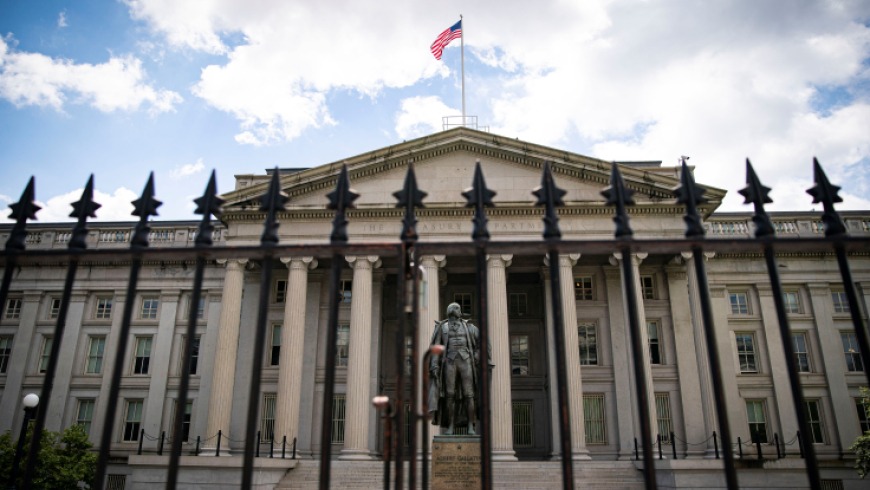President Donald Trump signed an executive order on Monday formally lifting U.S. sanctions on Syria, delivering on a pledge he made in May following his high-profile meeting with Syria’s interim president, Ahmad Sharaaa. The move marks a significant realignment in American policy toward Damascus and opens the door for deeper economic and diplomatic engagement.
Speaking ahead of the signing, White House press secretary Karoline Leavitt said the decision was aimed at “promoting and supporting Syria’s path to stability and peace.”
The executive order dismantles the core architecture of the sanctions regime that had been imposed by the executive branch over the past decade, while retaining measures that target individuals linked to former president Bashar al-Assad, his inner circle, and actors still deemed threats to regional stability.
A Promise Delivered
Trump’s action follows his May meeting in Riyadh with Ahmad Sharaaa, a former militant commander who rose to power after leading the overthrow of Assad’s regime earlier this year. At that meeting, Trump promised to lift the sanctions and urged Sharaa to meet a series of conditions—chief among them, restoring diplomatic ties with Syria’s neighbors, including Israel, and cooperating with the United States on regional security.
Administration officials have characterized the move as a strategic gesture designed to give Syria’s new leadership a chance to stabilize the country without external economic pressure.
“You have a general who transitioned from wartime into being the leader of a reframed country that needs everything,” said Tom Barrack, U.S. Ambassador to Turkey and Special Envoy for Syria. “That vision couldn’t be executed under the burden of sanctions. Syria needs to be given a chance—and that’s what’s happened.”
Not About Leverage
Barrack stressed that the administration is not seeking to impose a governance blueprint on Damascus.
“Neither the president nor the secretary of state is in the business of nation building,” Barrack said. “This isn’t about dictating a democratic model. It’s about giving them an opportunity, with some benchmarks we’ll continue to monitor—like the Abraham Accords, integration of foreign fighters, and protection of our former allies in the fight against ISIS.”
Brad Smith, the acting undersecretary for terrorism and financial intelligence at the Treasury Department, noted that while the order lifts broad sanctions, it preserves the authority to target individuals or entities that threaten U.S. national security or abuse the financial system.
“The significance of this moment cannot be overstated,” Smith said. “We remain hopeful for Syria’s future, but clear-eyed about the risks. Treasury will continue to act where necessary.”
Syria, Israel, and the Abraham Accords
A senior administration official confirmed that the Trump administration is encouraging Syria’s participation in the Abraham Accords, the U.S.-brokered normalization framework between Arab states and Israel.
“This is not about leverage. The president lifted the sanctions unconditionally,” the official said. “If Syria leans toward Israel, that’s to its benefit. There are already backchannel talks underway.”
According to the official, the administration believes that recent shifts in Israeli-Iranian dynamics have created an opening to bring Syria into a new regional alignment based on economic opportunity, peace, and integration.
What Happens to the Caesar Act?
While the executive order significantly dismantles U.S. sanctions infrastructure on Syria, it does not override the Caesar Syria Civilian Protection Act—a 2019 law that imposes sweeping penalties on entities engaging with the Syrian government. In May, Secretary of State Marco Rubio issued a 180-day waiver of Caesar Act provisions.
Now, the administration plans to review the suspension criteria. “Ultimately, only Congress can repeal the act,” a senior official noted.
A Calculated Gamble
Trump’s decision marks one of the most dramatic shifts in U.S. Middle East policy in recent years. While it offers Syria’s new government a path to reintegration, it also raises questions about the long-term stability of the post-Assad order and the U.S. approach to transitional justice.
As Syria navigates this new phase, the White House says it will continue to monitor issues such as terrorism, normalization with Israel, and the fate of political detainees.
Whether this strategy fosters peace or backfires remains to be seen—but for now, Washington has chosen to lift the weight of sanctions and bet on a fragile new beginning in Damascus.


